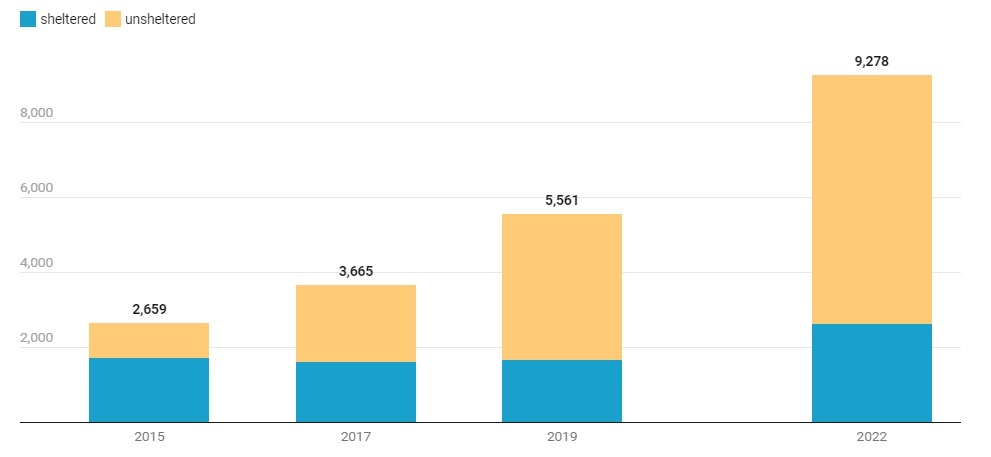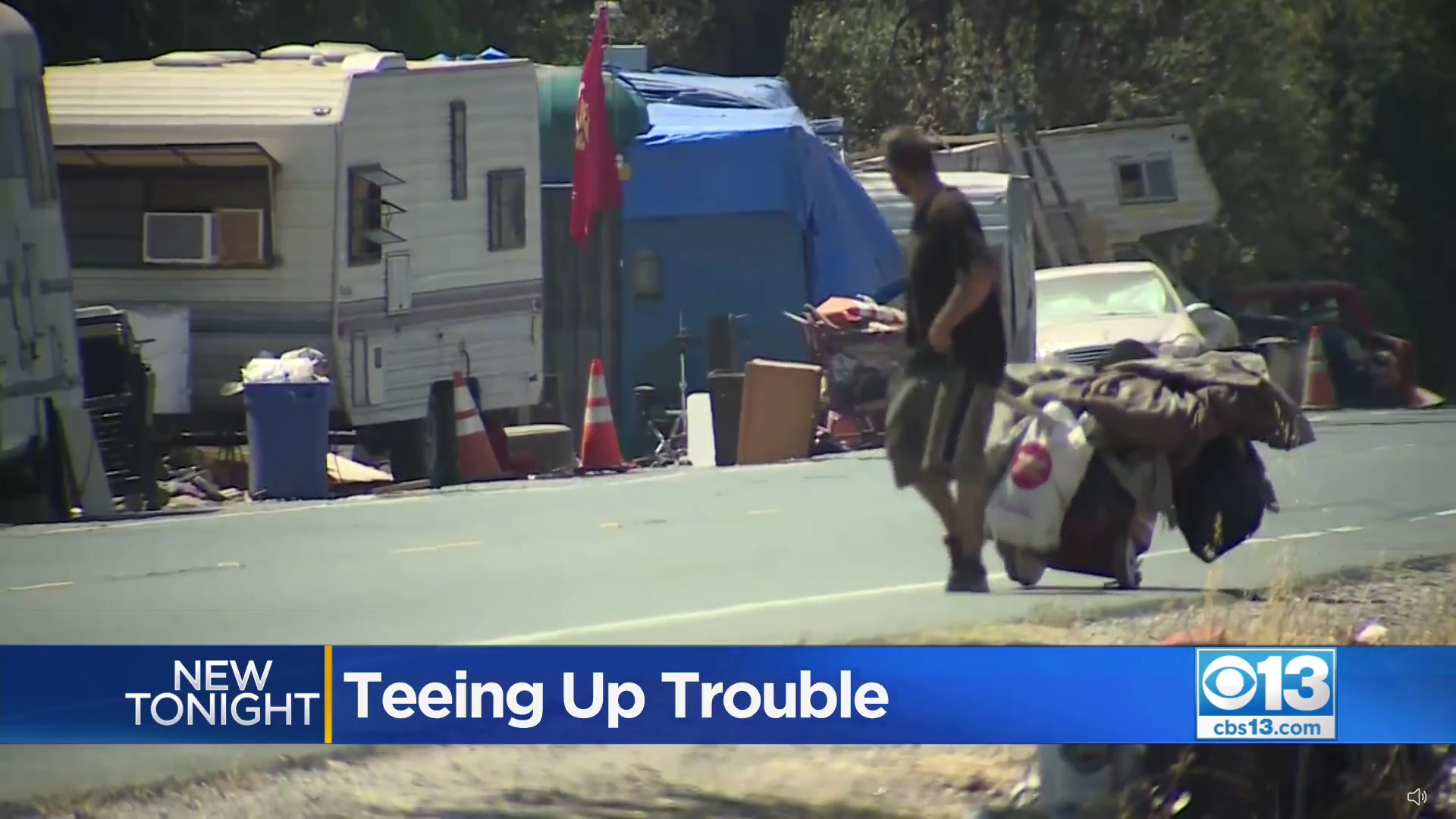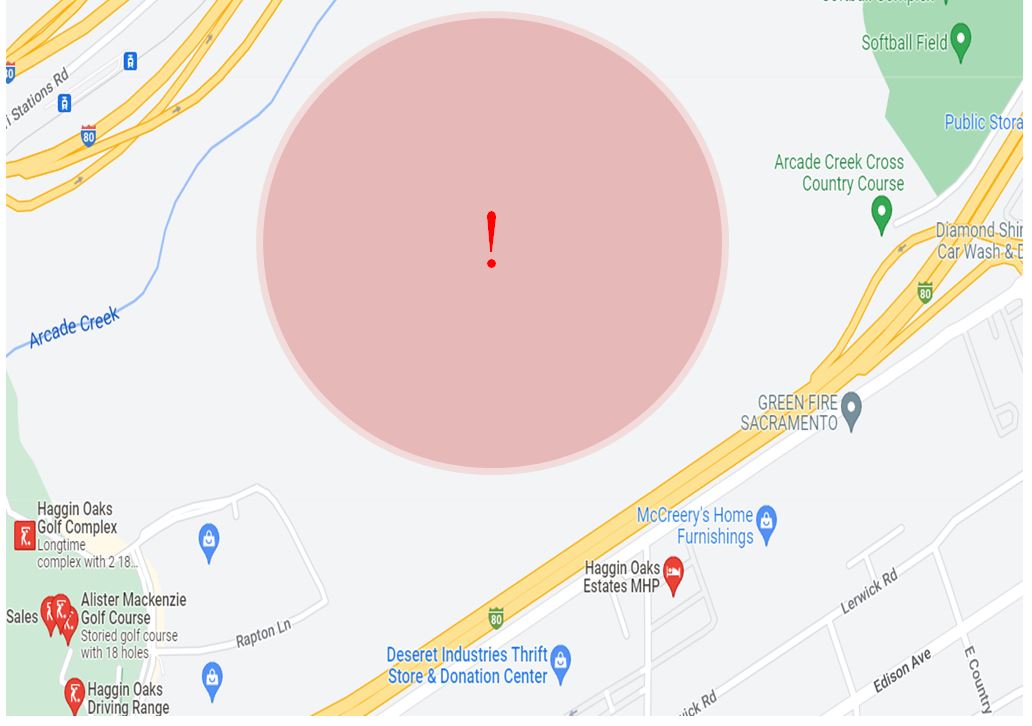Abstract
During the last several years, the Haggin Oaks Complex has been suffering from the impact of homelessness. The point is that there is a homeless encampment behind the organization on Roseville Road, and the behavior and lifestyles of its resident deter golfers and potential guests of the complex from playing at the local course. The owner is interested in the solutions that can be implemented to help Haggin Oaks reduce the negative consequences of homelessness that are evident on the adjacent territory. This report consists of several parts: introducing the problem and purpose statement, discussing homeless as a current Sacramento problem, evaluating stakeholders’ contributions, concluding the situation, and giving recommendations for the Haggin Oaks Golf Complex. Homelessness is never an easy condition, and it is wrong to blame one group of people and neglect the influence of other individuals and organizations. Cooperation and communication between Haggin Oaks’ team, the government, environmental activists, and homeless people are necessary to solve a problem, even if it takes more time than expected.
Introduction
The development of business in Sacramento is regulated by specific regulations and policies. Modern organizations support the economic growth of the city and the country and create new opportunities for people to find employment and earn a living. It is important to create a business plan, introduce a legal structure with personal liability, identify financing options, and pay taxes regularly. Haggin Oaks is a well-known golf complex in Sacramento with its rich history and cultural contribution. It was created in 1932 and witnessed the successes and failures of famous players such as Walter Hagen, Sam Snead, George Archer, Ben Hogan, Bill Glasson, etc. (History, n.d.). Today, the complex is introduced as a world-class teaching facility where more than 15 golf experts develop their programs for golf players of any age on more than 100 stalls (About, n.d.). While Haggin Oaks leaders and managers are able to solve its internal organizational problems, homelessness remains a serious external threat that needs a solution.
Problem
The Haggin Oaks Golf Complex is located on Roseville Road, where a homeless encampment can be found. The owner admits that during the last several months, many golfers have been deterred from playing at his golf course because of the threats created by homeless people along Sacramento sidewalks. In addition to interpersonal conflicts and poor social order, the camp becomes the reason for fires and the necessity to shut down the road movement in both directions (Fuentes & Cleary, 2021). In fact, the problem of homeless populations is common in many American cities, and business owners suffer from the inability to find an effective solution within a short period. The complex’s representatives cannot remove camps from the roads, and drivers continue facing challenges because of overcrowding behind Haggin Oaks.
In Sacramento, the ratings of homeless people are significantly high. During the last several decades, an increase of about 67% has been observed (as seen in Figure 1). Nichols (2022) explains this problem as an outcome of a housing affordability crisis: people cannot afford to buy their own homes, and renting has higher prices compared to other regions of the country. Homelessness is not a personal problem but a public concern that affects many spheres of human life.

Purpose Statement
The purpose of this report is to introduce enough information on homelessness in Sacramento and possible stakeholders and create a basis for further solutions to this problem. The Haggin Oaks owner is curious about if his organization is able to change the situation and remove the homeless community behind the complex. A deep understanding of homelessness will help achieve the goal and improve order and safety on Roseville Road.
Scope
The scope of this report is relatively narrow because it touches upon one particular social aspect, homelessness, in one specific region, Sacramento. At the same time, one should admit that, in general, homelessness is a serious public problem that has to be discussed at many levels. Thus, using the city as a background, identifying the reasons and outcomes of homelessness, and discussing the contributions of the government and the environmentalists will be effective for new projects.
Discussion
In the current discussion, the task is to explain why the Haggin Oaks Golf Complex is interested in solving the problem of homelessness in Sacramento. First, a brief evaluation of golf practice and the contributions of the chosen complex will be given. Then, the problem of homelessness will be discussed, including its main characteristics, causes, and outcomes. Finally, the impact of media, government, and environmentalists will be examined to prove that Haggin Oaks leaders can communicate and find support to solve the problem and invite more players to its course.
Golf Practice in Sacramento
In Sacramento, people are involved in various activities, and sport plays an important role in their lives. The Haggin Oaks Golf Complex has been a rational choice among many golfers due to the offered opportunities, the environment, and the team’s professionalism. Between April and October, the driving range usually remains open until midnight because people enjoy the view and weather conditions (About, n.d.). Visitors of different ages, races, and ethnicities are always welcomed at the complex. Introducing the best learning environment for players with various skills and interests is one of the core characteristics of the complex (About, n.d.). It is interesting not only to play golf but to study the history of Haggin Oaks. Since its creation at the beginning of the 1930s, the complex has become a place for player and community development (History, n.d.). Thus, all employees understand their societal position and need more time and experience in dealing with problems.
Homelessness in Sacramento
Today, the prevalence of homelessness in Sacramento is not easy to control or prevent. According to the findings by Nichols (2022), the homeless community included about 9,300 people in the city over the last three years. The conditions under which these people have to live are dramatic, but it is hard for the government to provide the necessary help and reduce the number. Although most people define the challenges homeless communities impose on their lifestyles and preferences, Finnigan (2022) underlines the necessity to recognize multiple economic and health burdens that make these people vulnerable. Unfortunately, when the golf complex’s visitors move by the local homeless encampment, they see the disorder and trash around (see Figure 2). However, this problem has more serious roots and outcomes, and the task for the Haggin Oaks owner is not just to remove the homeless people from their chosen territory but to think about his possible impact on their lives.
Causes and Outcomes of Homelessness
Understanding the conditions that lead to homelessness is critical in this report. Nichols (2022) identifies a housing affordability crisis as one of the reasons for the increased number of unhoused residents who have nothing to do but live in shelters and roadside encampments. People do not have equal opportunities to pay for their houses, and official representatives evict them with a notice (Finnigan, 2022). Reduced employment opportunities, uncontrolled birth rates, high costs, and family problems are other critical factors that provoke homelessness in the city.

A loss of permanent housing is characterized by severe consequences affecting human health, economic stabilities, skills, and interpersonal relationships. Sacramento citizens are not satisfied with the trash left by unhoused people on the streets and unwanted traffic on Roseville Road (Passmore, 2022). Besides, some accidents related to homeless behaviors have high costs and outcomes, including the fire near Haggin Oaks (Fuentes & Cleary, 2022). Although no injuries were reported, the environmental damage was hard to ignore. With time, homeless people lose their ability to care for themselves, suffer from mental problems, and experience abuse and violence either internally or externally.
The Worth of Media Coverage
One of the reasons people treat homeless as something bad or inappropriate is how different media sources introduce the problem. Journalists choose specific angles to create the required effect and deliver the message they find more interesting for the public. For example, in the news about the fire near Haggin Oaks, Fuentes and Cleary (2021) first underline that the fire provoked a “temporary shut down in both directions” and that “several explosions” made firefighters work hard to “keep the fire from spreading” (para. 4). When a person reads the article, the first thing that comes to mind is inconvenience related to social order and driving. Only then, attention was paid to the victim of the fire: a homeless man who lost everything in his tent (Fuentes & Cleary, 2021). Similar observations can be made in other articles, with specific recognition of internal damage or disorder (see Figure 3).

The Role of the Government
The government of Sacramento is regularly involved in analyzing and understanding homeless communities’ needs. They admit that not all but some camp residents are accused of property vandalism and golfers’ robberies (Passmore, 2022). The Haggin Oaks Complex and other businesses around the encampment expect the government to make some policies and solve the homelessness problem. Now, police calls and following the law are the main steps to control potential offenders. However, many golf clubs request local governments to remove and ban homeless camps because of the inability to predict fires and avoid property damage (Clift, 2022). The government is a legal representative of the city, whose purpose is to protect citizens and local businesses. This role is critical, but the experience in creating good living and business conditions is still poor.
Environmental Perspective
Talking about the conflict between homeless people and environmental activists, it is important to focus on the goals the parties try to achieve. For example, environmentalists are interested in the ways how the government controls homelessness and covers losses. Clift (2022) discovers that homeless people cannot be jailed or fined because of violating the ordinance. Still, activists are concerned about abandoned trash, needles, and other debris that do not disappear if no one takes care of them (Clift, 2022). The same questions are raised by the Haggin Oaks employees who do not have a responsibility to clean the roads far from their complex. Still, they know their guests are not happy to see the damage or dust near the encampments along the road. There are many other places where the government can support homeless people and create properly equipped shelters (see Figure 4). The city’s environment needs to be protected, and the cooperation between the government, activists, and Haggin Oaks is a step toward understanding how to solve the problem of homeless with fewer challenges.

Population Involvement
Finally, the discussion of the homelessness problem should include the role of the population and the desire of people to cooperate. Instead of blaming each other for excessive trash, trafficking, and overcrowding, it is necessary to understand what can be done with the offered resources and burning concerns. If law enforcement is only used to control homelessness and punish people who cannot find a home, no understanding, negative feelings, and criminalization increase (National Coalition for Housing Justice, 2021). According to Wickham (2020), homeless individuals are vulnerable, and such policies as subsidies, rental supplements, education, and therapy are required. All these ideas cannot be initiated by the golf complex or the government only, proving the worth of population involvement and evaluating the situation from multiple perspectives. When homeless people get an opportunity to stabilize their financial positions, they will be able to find new areas to live in and stop bothering local owners.
Conclusion
In this report, information about a variety of perspectives on homelessness in Sacramento was gathered and analyzed. Evaluating local newspapers proves that the media does not always try to cover the major aspects of homeless-related problems and concerns. Instead of paying attention to the damage and disabilities of the vulnerable community, business owners focus on their problems and want to remove the challenge instead of help. Besides, the government cannot find an effective solution because of organizational issues and specifications of the problem. Environmental activists do not hate homeless people, but they consider them a threat. In general, it is expected to rely on cooperation, humanism, and mutual support to ensure homelessness does not damage the environment. When a person loses a home and has nothing place to go except a local shelter on the road, it is hard to think about the consequences of behaviors or decisions. Haggin Oaks has faced the problem of homelessness, and this report should help identify some ways to improve the situation.
Recommendations
The main goal of this report is to offer solutions for the owner of the Haggin Oaks Complex, who is concerned about the damage from the homeless encampment on Roseville Road behind the facility. The steps can be divided into three main groups: the governmental impact, environmentalist perspective, and personal involvement (communication and decision-making). Haggin Oaks should understand that homelessness is a serious societal problem, and positive outcomes are hardly achievable quickly. However, it is necessary never to lose hope and believe that the situation can be changed.
- Haggin Oaks needs to address the government and other official agencies to:
- Examine firefighters’ reports and prove the urgency of the problem;
- Evaluate the already imposed governmental bans and the worth of new policy-making;
- Consider available financial help for homeless people from profit and non-profit organizations;
- Cooperate with police offers to predict trespassing and other criminal activities in which homeless individuals may be involved.
- Haggin Oaks has to contact local environmental activists to:
- Underline the importance of the natural beauty of the region;
- Show not anti-homeless but pro-environment intentions
- Maintain cleanliness and order on the roads and the adjacent territory
- Observe local homeless encampments and inform residents about the necessity of peaceful co-existence;
- Predict and avoid a humanitarian crisis at the local and national levels.
- Haggin Oaks should never be afraid to contact the homeless community:
- Approach the homeless communicate on Roseville Road;
- Explain major concerns and possible outcomes of conflicting situations;
- Continue searching for alternatives together with homeless families;
- Organize meetings and discuss current situations
- Consider benefits for Haggin Oaks if homeless people re-organize their living conditions and improve the area not to disturb drivers and players.
References
About. (n.d.). Haggin Oaks. Web.
Clift, T. (2022). Sacramento leaders ban homeless camps from sidewalks, American River Parkway and more. The Sacrament Bee. Web.
Finnigan, R. (2022). Self-reported impacts of the COVID-19 pandemic for people experiencing homelessness in Sacramento, California. Journal of Social Distress and Homelessness, 31(1), 72-80. Web.
Fuentes, Z., & Cleary, L. (2021). Homeless encampments, RV catch fire near Haggin Oaks golf course. abc 10. Web.
History. (n.d.). Haggin Oaks. Web.
National Coalition for Housing Justice. (2021). Policing- and punishment-based approaches: A really expensive way to make homelessness worse. NCHV. Web.
Nichols, C. (2022). Sacramento’s homeless population spikes 67% to nearly 9,300 since 2019. Capradio. Web.
Passmore, S. (2022). Neighbors, businesses detail homeless crisis near Del Paso Regional Park. CBS Sacramento. Web.
Wickham, S. (2020). Effective interventions for homeless populations: the evidence remains unclear. The Lancet Public Health, 5(6), 304-305. Web.